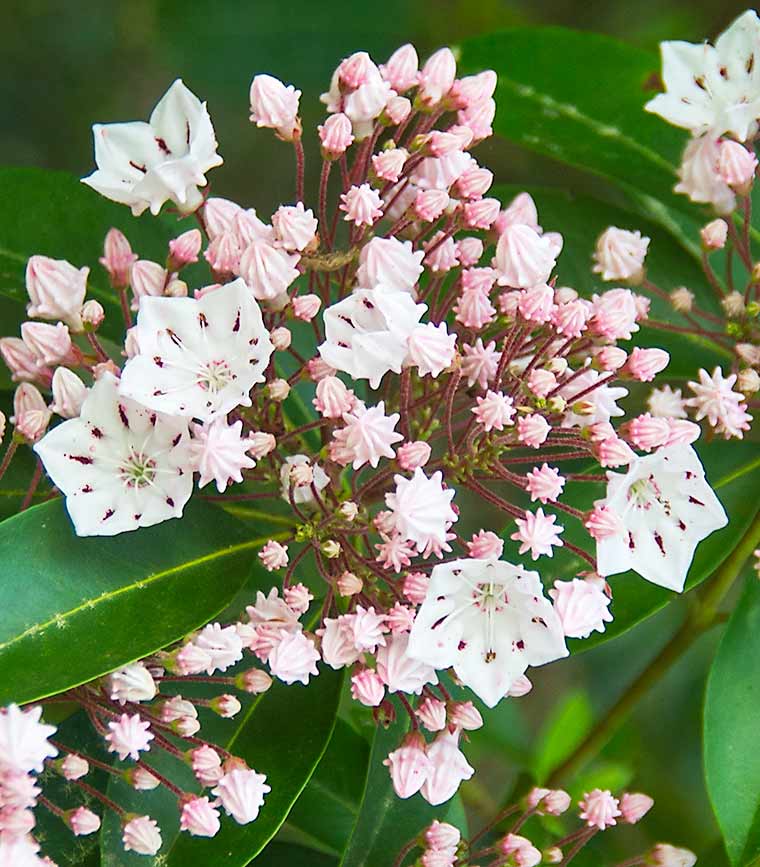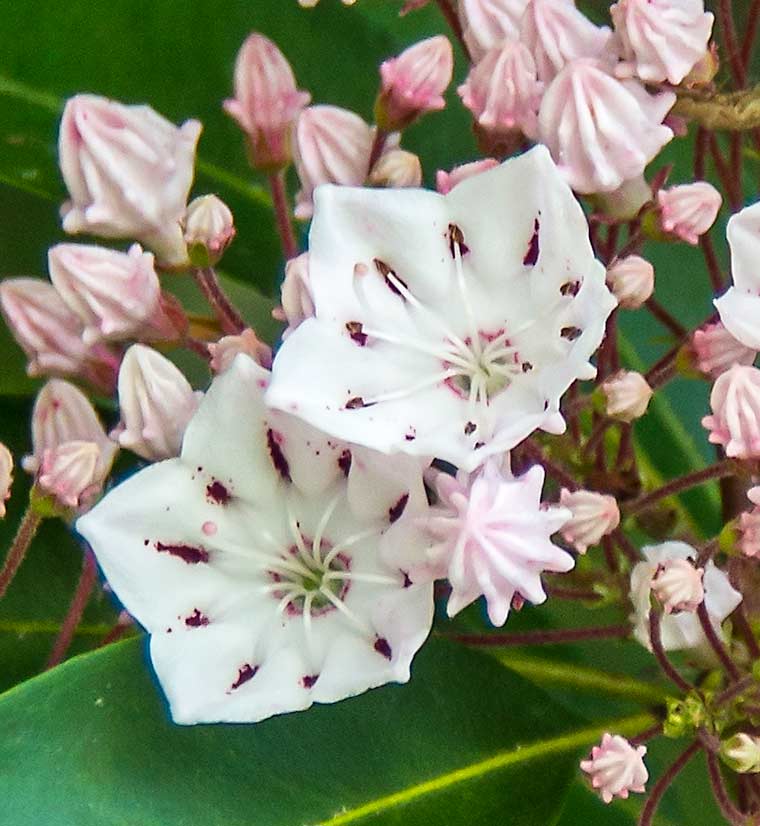 We took a hike around the lake at Little Mulberry Park near Dacula, GA the other day. One of the things we saw was this Mountain Laurel (Kalmia latifolia) in bloom. This is a really interesting and gorgeous native species found from Maine west to Indiana and south to northern Florida and Louisiana. Even the flower buds are attractive; they look like little ribbed acorns.
We took a hike around the lake at Little Mulberry Park near Dacula, GA the other day. One of the things we saw was this Mountain Laurel (Kalmia latifolia) in bloom. This is a really interesting and gorgeous native species found from Maine west to Indiana and south to northern Florida and Louisiana. Even the flower buds are attractive; they look like little ribbed acorns.
Other common names are Calico Bush, or Spoonwood (apparently Native Americans and early settlers made spoons from the very hard wood of this plant). In the mountains, it is sometimes called Ivy or Ivy Bush. Mountain-laurel is the state flower of Connecticut and Pennsylvania. Several cultivars have been selected for deeper pink flower colors, and these are available in gardening catalogs.
 If you look closely at the flowers, you can see a very interesting adaptation for pollination. The ten white stalks inside each flower are the filaments of the stamens. The end of each filament contains an anther which holds the pollen. As you can see, the anthers are stuck to the petals in dark pink spots which occur in the center and at the edge of each of the five white petals. You can also see that the filaments are bent and under tension, like a spring. When an insect lands on the flower and pokes around looking for nectar, the anthers are dislodged from the petals, and and the tension in the filaments causes them to spring outwards and discharge the pollen. Some of the pollen sticks to the insect and gets carried to another flower to achieve cross-pollination. Some experiments have shown that the pollen can be thrown up to six inches from the flower.
If you look closely at the flowers, you can see a very interesting adaptation for pollination. The ten white stalks inside each flower are the filaments of the stamens. The end of each filament contains an anther which holds the pollen. As you can see, the anthers are stuck to the petals in dark pink spots which occur in the center and at the edge of each of the five white petals. You can also see that the filaments are bent and under tension, like a spring. When an insect lands on the flower and pokes around looking for nectar, the anthers are dislodged from the petals, and and the tension in the filaments causes them to spring outwards and discharge the pollen. Some of the pollen sticks to the insect and gets carried to another flower to achieve cross-pollination. Some experiments have shown that the pollen can be thrown up to six inches from the flower.
The stigma (which is the organ to which the pollen must be transferred to achieve pollination) can be seen in these flowers as a small pink sphere on top of a long stalk that emerges from the center of the flower. Look toward the left side of each flower to see it.
Another interesting thing about this plant is its toxicity. All parts of the plant are poisonous to mammals. Even honey produced from the flowers is poisonous if a sufficient amount is eaten. Fortunately for us, Mountain Laurel honey is so bitter than it is unlikely that one would eat enough to cause a problem.

Our neighbor in Tucker many years ago had one of these & it is gorgeous! Maybe you need to plant one in your yard! Then, I can come see it!